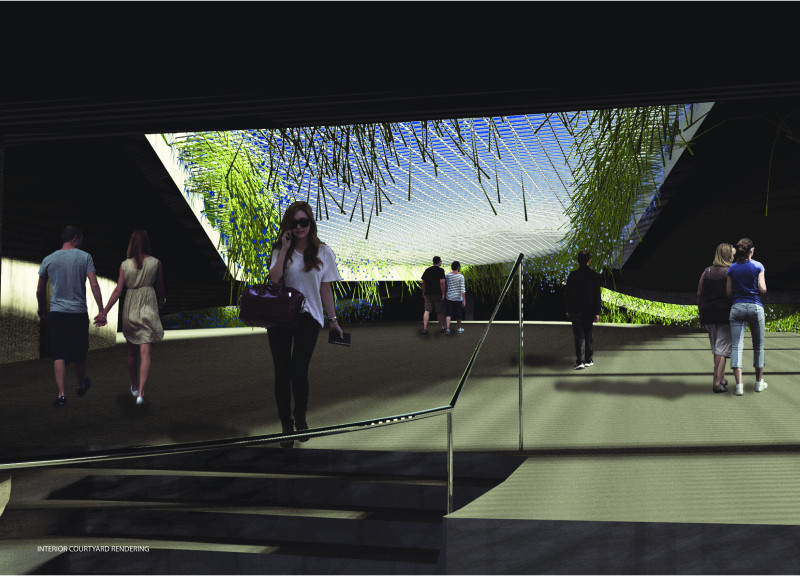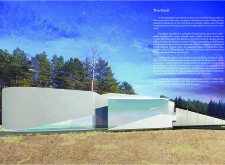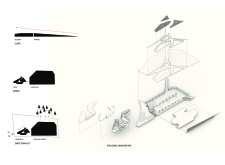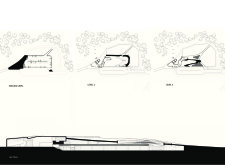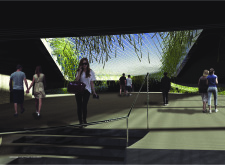5 key facts about this project
The Knoll exists as a careful response to the unique setting of a bog ecosystem. It invites visitors to connect with the region's ecological features while preserving the landscape's natural character. The design centers around making subtle connections to nature that encourage a deep and engaging experience.
Circulatory Paths
A network of narrow wooden pathways weaves through the terrain, guiding visitors on a journey of exploration. These paths invite people to slow down and interact with the plants and wildlife of the bog. By choosing to make minimal changes to the environment, the paths enhance the natural beauty of the area while ensuring it remains accessible.
Subterranean Parking
Parking facilities are placed underground, freeing up surface area for the park. This approach improves visitors' experiences by increasing space for various activities like exhibitions, playgrounds, and quiet areas for reflection. The flexibility of these spaces enriches the relationship between people, nature, and architecture, creating a welcoming environment for all.
Spatial Dynamics
The arrangement of spaces reflects natural processes found in the earth. The design carves through the landscape, allowing visitors to experience a range of views. Each viewpoint is chosen to encourage moments of peace within the lively scenery. This layout fosters an appreciation for the bond between constructed elements and the surrounding wilderness.
Materiality
The structure relies on heavier lithic materials, providing a solid and grounded presence in the soft landscape. This choice creates a pleasing contrast while maintaining a connection to the geology of the site. The careful selection of materials plays a vital role in the design’s intent, promoting a respectful relationship between human presence and the natural environment.
Panoramic views frame the landscape, each inviting moments of quiet reflection and deeper awareness of the bog's unique elements.


